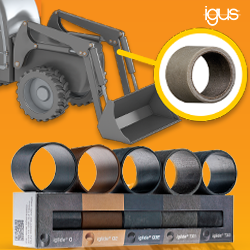New OCTOPUZ Post Engine Saves Time while Increasing Efficiency and Accuracy
The Robotics Application Engineers at In-House Solutions are continually developing ways to improve OCTOPUZ, an intelligent CAD-to-Path and offline robot programming and simulation software solution ideal for any path-sensitive application or complex simulation. By standardizing how posts are written, OCTOPUZ saves everyone time while increasing efficiency and accuracy. OCTOPUZ - Complex Made Simple
From loading machines to welding, machining to spraying, OCTOPUZ enables robot users all over the world to start using their robots in more productive ways. Generating and simulating the paths for these applications is a core strength of the OCTOPUZ team, but they saw a way to further enhance the process and end result. This required the development of a new post engine.
When redesigning the new OCTOPUZ post engine, there were specific goals they set out to accomplish.
It had to:
- Decrease the time required to write new posts
- Create a standard structure to all posts
- Have the ability to mass-update all posts
- Support all robot code structures
- Allow changes from OCTOPUZ, the integrator or end user
Previously, writing a new robot post processor would take about a week. A week is already impressive for complex posts, but the OCTOPUZ team knew they could do better. Each post had been written from scratch as there was no base to start from. This meant there were inconsistencies in the layout of each post, as each one was written by a different person at a different time to solve different problems. As a result, updating or modifying a post was cumbersome.
With the new OCTOPUZ post engine, each post functions more like a dictionary. The post engine parses all of the information from the simulation and passes it through the "dictionary" for that controller. That is where the brand-specific syntax is added and is written to the file, or multiple files. Any changes to the post engine affects all posts. For example, if a new feature is added to the post engine, all posts are updated immediately.
Writing to multiple files (ie. Kuka or Staubli) is made simple using streams. Streams are our way of organizing a set of files before anything is actually written. Data can be evaluated during posting and streams can determine if files need to be output early, and also control where they are output. Splitting code into multiple files is as simple as pointing a particular stream towards a file. The post engine handles the rest. Because the posts have been made using stream, they come open and editable in all versions of OCTOPUZ. This means any changes can be made by us, the integrator, or the end user.
The Robotics Application Engineers at In-House Solutions are continually developing ways to improve OCTOPUZ, an intelligent CAD-to-Path and offline robot programming and simulation software solution ideal for any path-sensitive application or complex simulation. Standardizing how OCTOPUZ posts are written saves everyone time while increasing efficiency and accuracy.
OCTOPUZ - Complex Made Simple
Featured Product

